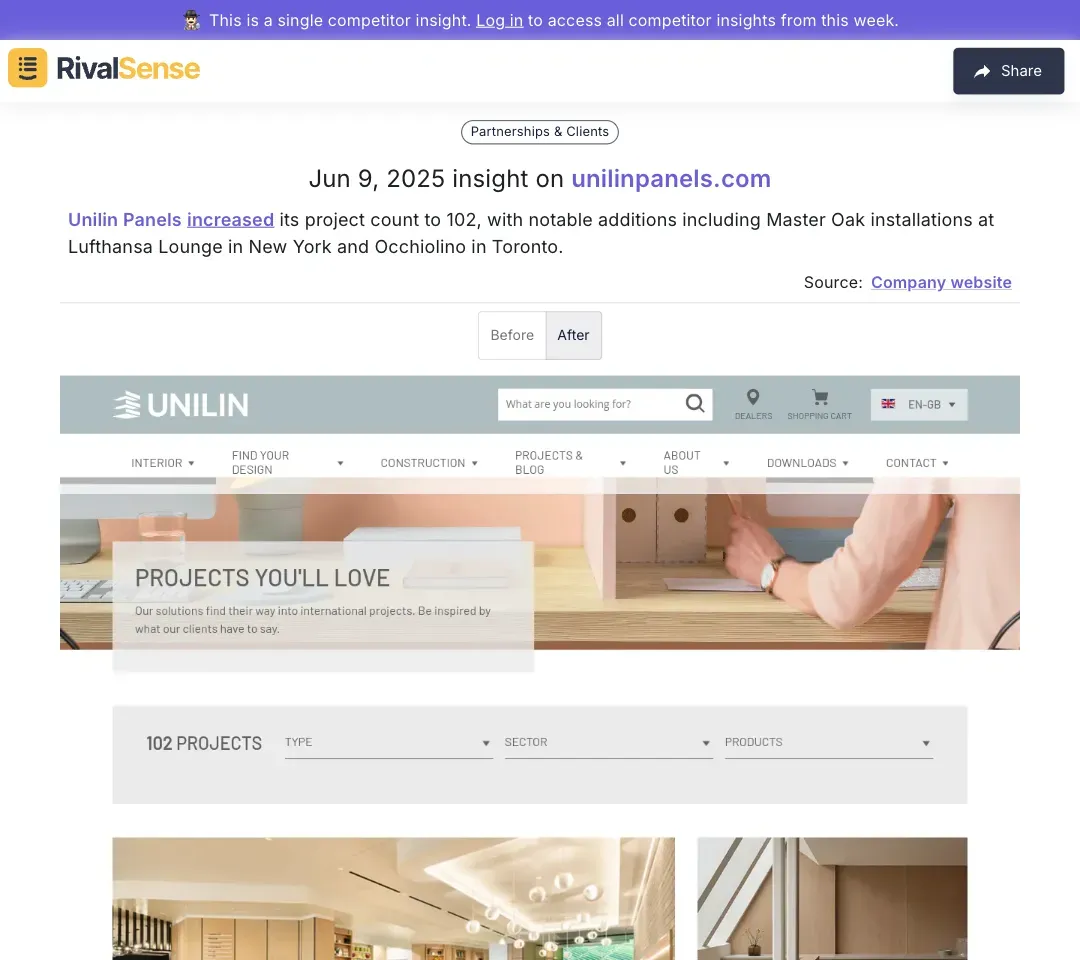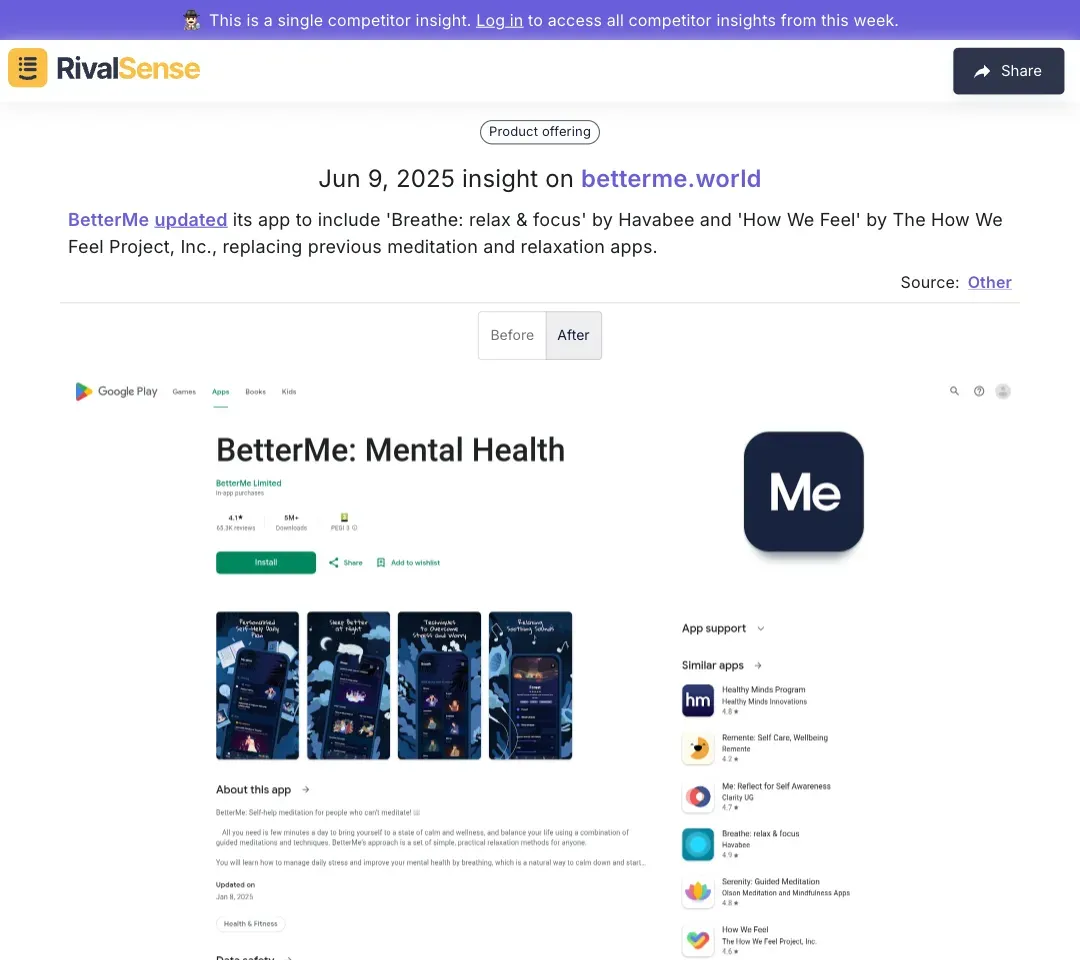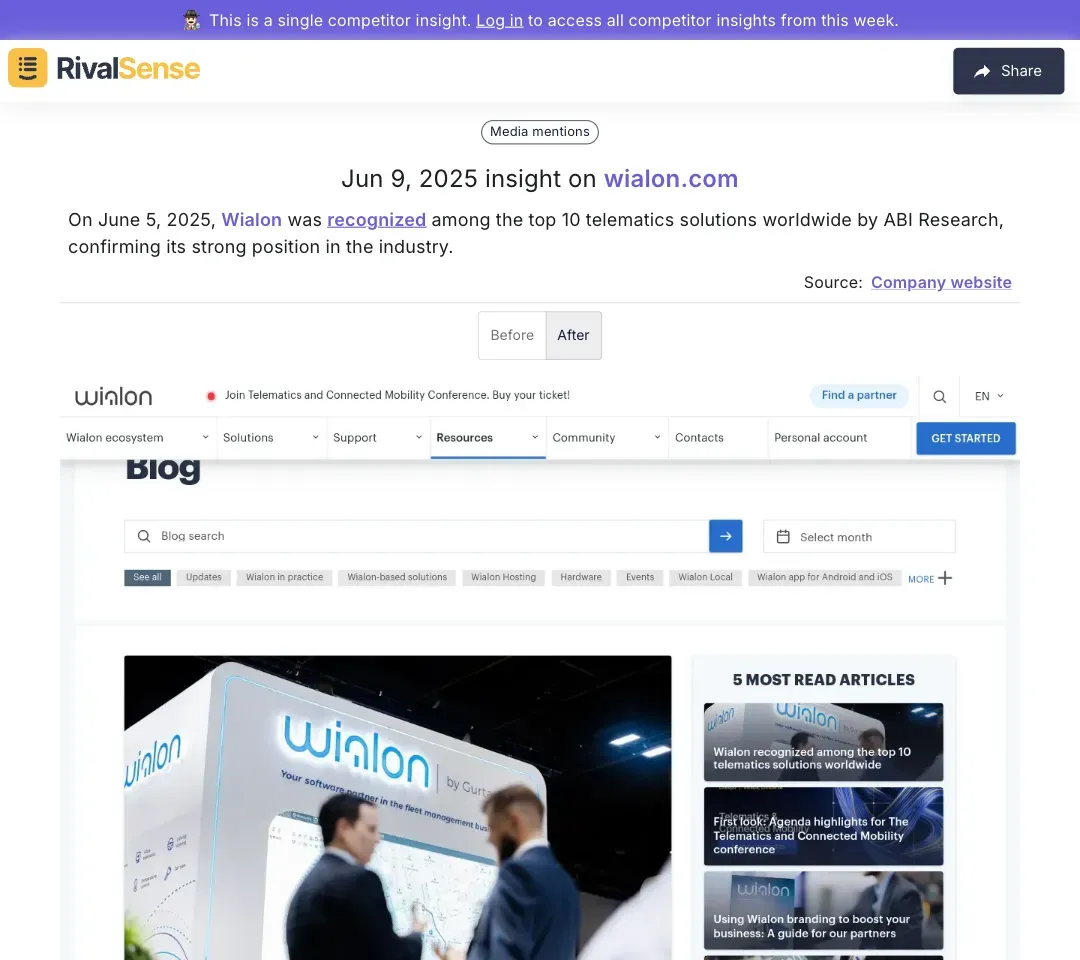Tracking Indirect Competitors Through Website Changes
In today's competitive landscape, indirect competitors—businesses offering alternative solutions to the same customer problems—significantly influence market dynamics. While not direct rivals, their strategic shifts can reshape industry trends and customer expectations. Monitoring their website changes provides crucial intelligence about strategic pivots, product innovations, and engagement tactics that could impact your business.
Website updates often serve as early indicators of market shifts. A sudden emphasis on sustainability or new service categories might signal emerging trends requiring your attention. By tracking these digital footprints, you gain foresight to refine your positioning and capitalize on gaps before competitors do.
🔍 Practical steps to get started:
- Identify Indirect Competitors: List businesses solving similar customer needs with different solutions
- Monitor Key Pages: Prioritize homepage, product pages, and blogs for strategic updates
- Use Tracking Tools: Automate monitoring with specialized platforms
- Analyze Trends: Note frequency, timing, and themes of changes
- Act on Insights: Adapt strategies based on gathered intelligence
Learning from Project Expansions and Collaborations
Tracking project expansions and collaborations reveals critical insights about competitors' growth strategies and market priorities. These changes often indicate geographic or sector diversification that could signal emerging opportunities or threats for your business. Understanding these moves helps benchmark your own expansion plans against market realities.
For instance, Unilin Panels recently increased its project count to 102, adding high-profile installations like Master Oak at Lufthansa Lounge in New York and Occhiolino in Toronto. This expansion demonstrates their strategic focus on premium international venues.

Why it matters: Tracking project growth reveals expansion patterns and partnership strategies, helping you identify underserved markets.
✅ Actionable framework:
- Monitor project volume spikes: Sudden increases may indicate new market entries
- Analyze collaboration announcements: Check 'Partners' or 'Case Studies' sections quarterly
- Compare with your roadmap: Identify gaps in your service coverage or geographic presence
Analyzing Product Updates and Feature Replacements
Product updates and feature replacements offer windows into competitors' innovation priorities and customer feedback loops. These changes often reflect broader industry shifts or responses to evolving user expectations that could impact your own product development cycle. Regular monitoring helps anticipate feature trends before they become market standards.
Consider BetterMe's recent app update replacing meditation features with 'Breathe: relax & focus' and 'How We Feel' integrations. This pivot toward specialized third-party solutions suggests a strategy focused on curated experiences rather than in-house development.

Why it matters: Feature swaps reveal strategic pivots, helping you anticipate market demands and refine your roadmap.
🔧 Implementation checklist:
- Benchmark new features against your offerings
- Analyze user feedback on competitor updates via review platforms
- Prioritize roadmap adjustments addressing observed gaps
- Test minimal viable versions before full feature rollouts
Gauging Industry Recognition and Awards
Industry accolades provide objective benchmarks for competitor strengths and market positioning. Tracking awards and certifications reveals which capabilities customers and analysts value most, helping you prioritize your own improvement areas. These recognitions often precede increased market share or funding rounds.
Take Wialon's recent inclusion among ABI Research's top 10 global telematics solutions on June 5, 2025. This recognition validates their technical leadership and signals strong competitive positioning.

Why it matters: Awards highlight industry benchmarks, enabling objective performance comparisons.
🏆 Strategic approach:
| Action | Business Impact |
|---|---|
| Monitor award announcements | Identify emerging industry standards |
| Analyze selection criteria | Discover valued capabilities to develop |
| Benchmark against winners | Set measurable improvement targets |
| Leverage trends in marketing | Align messaging with market priorities |
Implementing a Competitor Tracking Strategy
Effective competitor monitoring requires systematic processes beyond occasional checks. Dedicated tools transform random observations into actionable intelligence streams, saving significant research time while ensuring comprehensive coverage. The right approach turns data into strategic advantages.
Begin with specialized tracking solutions like Visualping or PageCrawl for website changes, supplemented by SEO tools for traffic analysis. For holistic monitoring covering product launches, pricing changes, and executive moves across multiple channels, integrated platforms deliver efficiency.
📊 Optimization tactics:
- Create centralized dashboards for competitor updates
- Conduct monthly trend analysis sessions
- Assign team members specific monitoring responsibilities
- Automate alerts for high-impact changes (pricing/features)
Conclusion: Staying Ahead in a Competitive Landscape
Consistent competitor tracking transforms market uncertainty into strategic clarity. By decoding indirect rivals' website changes, you gain foresight to anticipate trends, refine positioning, and seize opportunities proactively. This discipline builds market agility that compounds over time, turning competitive intelligence into sustainable advantage.
The most successful businesses treat competitor analysis as continuous learning, not periodic audits. Implement these practices to maintain strategic flexibility and innovation momentum regardless of market shifts.
✅ Quick-start checklist:
- ✔️ Identify 5-7 key indirect competitors
- ✔️ Configure automated monitoring for their digital properties
- ✔️ Schedule bi-weekly analysis sessions
- ✔️ Document insights in shared competitive briefs
- ✔️ Align findings with product and marketing planning
Ready to transform competitor insights? Try RivalSense free to automate tracking across websites, social media, and registries—get your first competitor report today! Our weekly digest covers product launches, pricing changes, partnerships, and executive moves so you never miss strategic shifts.
📚 Read more
👉 How BetterMe Dominated the Health App Market Using Competitor Intelligence
👉 5 Actionable Strategies to Leverage Competitor Insights from Events
👉 Navigating Tariff Uncertainty: How Competitive Intelligence Becomes Your Strategic Compass
👉 Decoding Executive Moves: How Stephen Kruger's Transition Impacts Competitive Landscapes
👉 How Trend Micro's Android Botnet Research Reveals Critical Competitive Shifts
